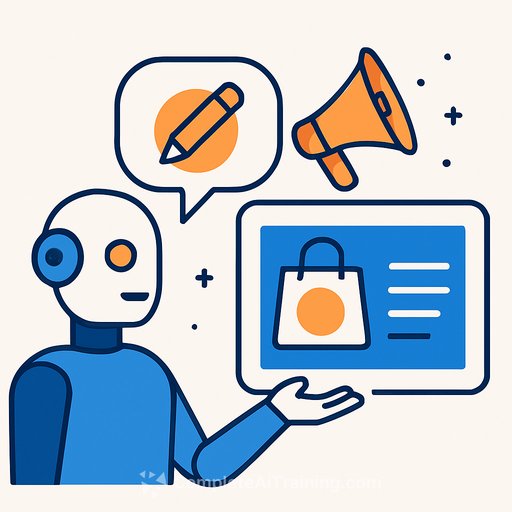Dreamforce 25: The Theory of More for Creatives
Something big is missing from AI hype: imagination. Most teams chase efficiency and trim tasks. Creatives should chase upside - new value, fresh formats, braver ideas. That's the Theory of More: use AI to create more time, more originality, and more growth.
Adoption is easy. Impact is the work. Many pilots stall because they lack a clear purpose, team cohesion, and a creative vision that ties agents to outcomes. If AI stays as isolated tools, it remains potential - not a partner.
From FOMO to Focus
Reports point to high adoption, yet weak results. That gap isn't technical. It's strategic. Define the 'what,' 'how,' and 'why' before you spin up another agent.
- What will we create that we couldn't ship before?
- How will agents plug into our workflow, data, and brand voice?
- Why does this matter for the audience and the business right now?
If you can't answer all three, you're not ready to scale.
Trust Is the Cornerstone
Most failures happen after the demo. The cause is familiar: weak governance, shaky data foundations, and unclear accountability. Trust isn't paperwork - it's the system that turns agents into reliable colleagues.
- Guardrails: policies for data, safety, IP, tone, and usage limits
- Observability: logs, review workflows, and human-in-the-loop decisions
- Consistency: shared context and rules across every agent
If you need a starting point, look at the NIST AI Risk Management Framework. Trust opens the door for creative risk-taking - new services, frictionless experiences, and confident experimentation.
From Task-Checking to Trailblazing
This is where the Theory of More comes alive. Headlines talk about cuts. The real story is capacity. AI gives you more cycles to explore, test, and ship.
- Artisan creators: guide agents like apprentices - brief, critique, iterate, refine
- Conversation design: go beyond prompts to structure roles, constraints, and tone
- Data literacy: every lead should read, query, and question the numbers
- Ethics as design: build fairness and attribution into the experience, not after
Your edge isn't clicks. It's taste, judgment, and shipping loops that compound.
No Agent Is an Island
As use cases multiply, so does agent sprawl. Uncoordinated bots create risk, rework, and confusion. Creative teams need orchestration: one source of truth, shared goals, and clean handoffs.
- Unified foundation: identity, permissions, and a single knowledge layer
- Shared context: brand voice, product facts, and live data streams
- Coherent goals: each agent contributes to the same customer outcomes
Stitch the system so value flows through every touchpoint - not in pockets.
A Practical Playbook for Creative Teams
- Define the ambition: write a one-page "What We Will Create" that only AI makes possible (formats, speed, personalization).
- Stand up trust: data policy, safety baselines, human review, and approval paths that match the risk.
- Design conversations: roles, tone guides, constraints, and success criteria for each agent.
- Start with one hero flow: concept to publish (or concept to prototype) as an end-to-end pipeline.
- Orchestrate: shared context store, event triggers, and naming standards to avoid sprawl.
- Run creative sprints: 2-week cycles to test formats, A/B voice, and push novelty, not volume.
- Upskill: move from prompts to conversation systems, add data basics, and practice ethical review. See curated learning under prompt engineering.
- Measure weekly: quality, originality, time-to-ship, and customer impact - then double down.
Metrics That Matter
- Time won: hours removed from repetitive steps and reinvested into concept work
- Originality rate: percent of output that's net-new formats, not repackaged
- End-to-end speed: idea to publish (or prototype) cycle time
- Customer proof: retention, conversion lift, NPS on AI-touched experiences
- Governance health: incidents, review coverage, and policy adherence
Creative Leadership in the Agentic Era
Great leaders will treat agents as teammates to be developed. Train them. Observe them. Give them constraints and room to contribute. Then hold them to outcomes.
Because there's more here than efficiency. There's more in you than productivity. Use AI to ship bolder ideas, at higher frequency, with higher standards. Create more.
Want structured paths for skill growth? Explore role-based learning at Complete AI Training.
Your membership also unlocks:




